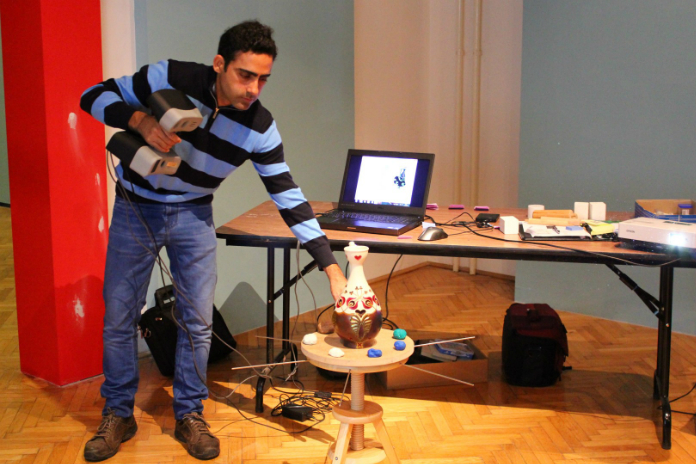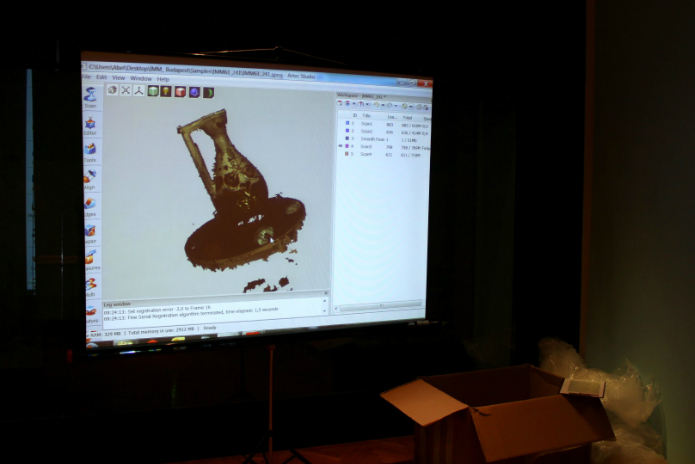This Is How it Works: 3D Scanning
DIGITIZATION
Around 200 works-of-art are being scanned with the help of 3D technology at the Museum of Applied Arts during the next two weeks.
| Molnár Dániel |
2013-09-23 14:41 |
 The scanning in 3 dimensions is being carried out in the framework of the Partage Plus Program. The aim is to complete a digitization of art-nouveau collections of the participant countries and publishing the results on the website of Europeana. At the moment 23 European states take part in the project and according to the plan more than 75 thousand digital contents will have been processed.
The scanning in 3 dimensions is being carried out in the framework of the Partage Plus Program. The aim is to complete a digitization of art-nouveau collections of the participant countries and publishing the results on the website of Europeana. At the moment 23 European states take part in the project and according to the plan more than 75 thousand digital contents will have been processed.
The experts of the Museum of Applied Arts are digitizing more than 4 thousand objects and more than 200 pieces are scanned in 3 dimensions. The 3D scanning is run and controlled by a firm from Germany. The rich collection has been selected and chosen from the products of the Zsolnay Factory, since these objects are of very high standard and regarded as master pieces of Art-Nouveau.
 In a press conference the scanner was introduced and tried on a vase. During the process not only the picture of the object is recorded but all the information related to its surface. The object is put on a rotating console and being photographed from every angle. The data are gathered in a software, which is capable of assorting and situating the spatial information. The results are registered and accessible for everyone in a pdf file.
In a press conference the scanner was introduced and tried on a vase. During the process not only the picture of the object is recorded but all the information related to its surface. The object is put on a rotating console and being photographed from every angle. The data are gathered in a software, which is capable of assorting and situating the spatial information. The results are registered and accessible for everyone in a pdf file.
Museum professionals of the Applied Art Museum are hopeful that in the future digitized objects can be displayed, since the pieces presented in an interactive way in 3D format can be examined by the visitors and will surely be one of the most interesting section of an exhibition.
If interested in the process of the project click on the website: partage-plus.eu